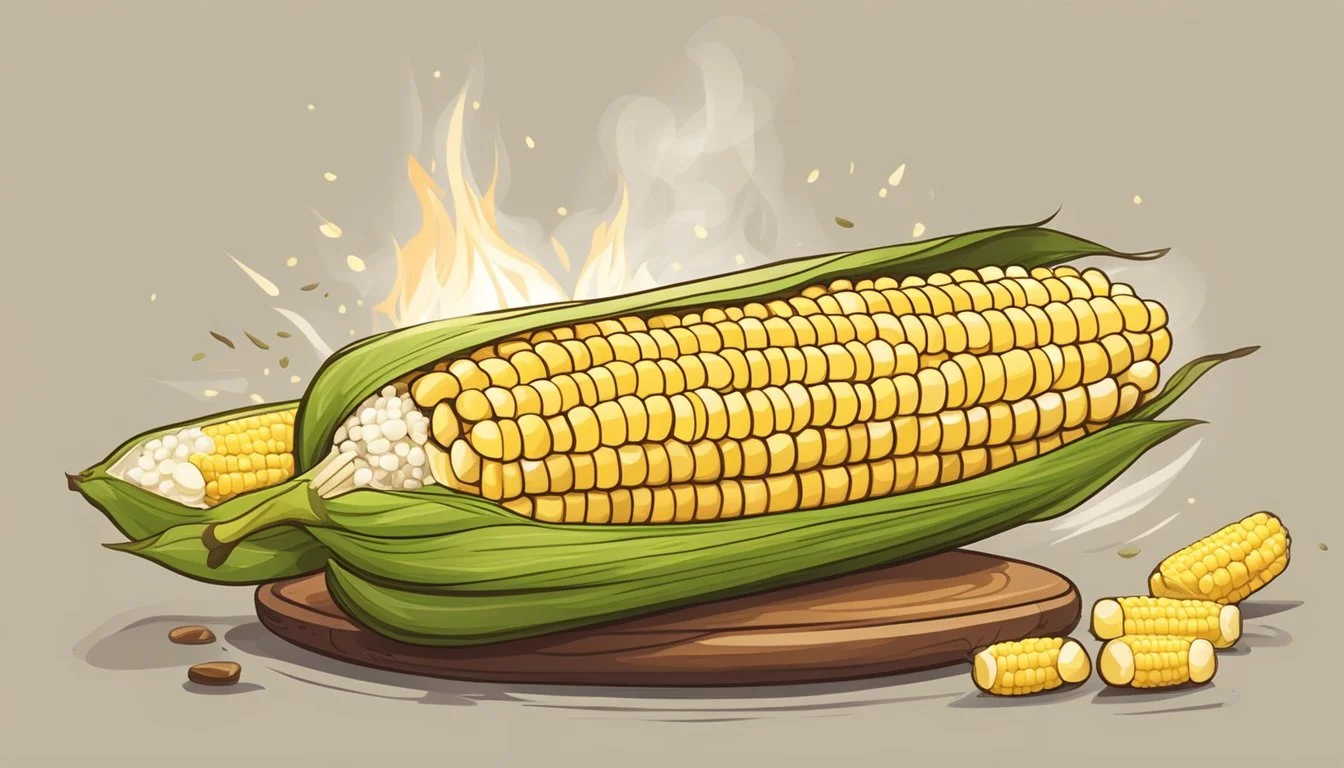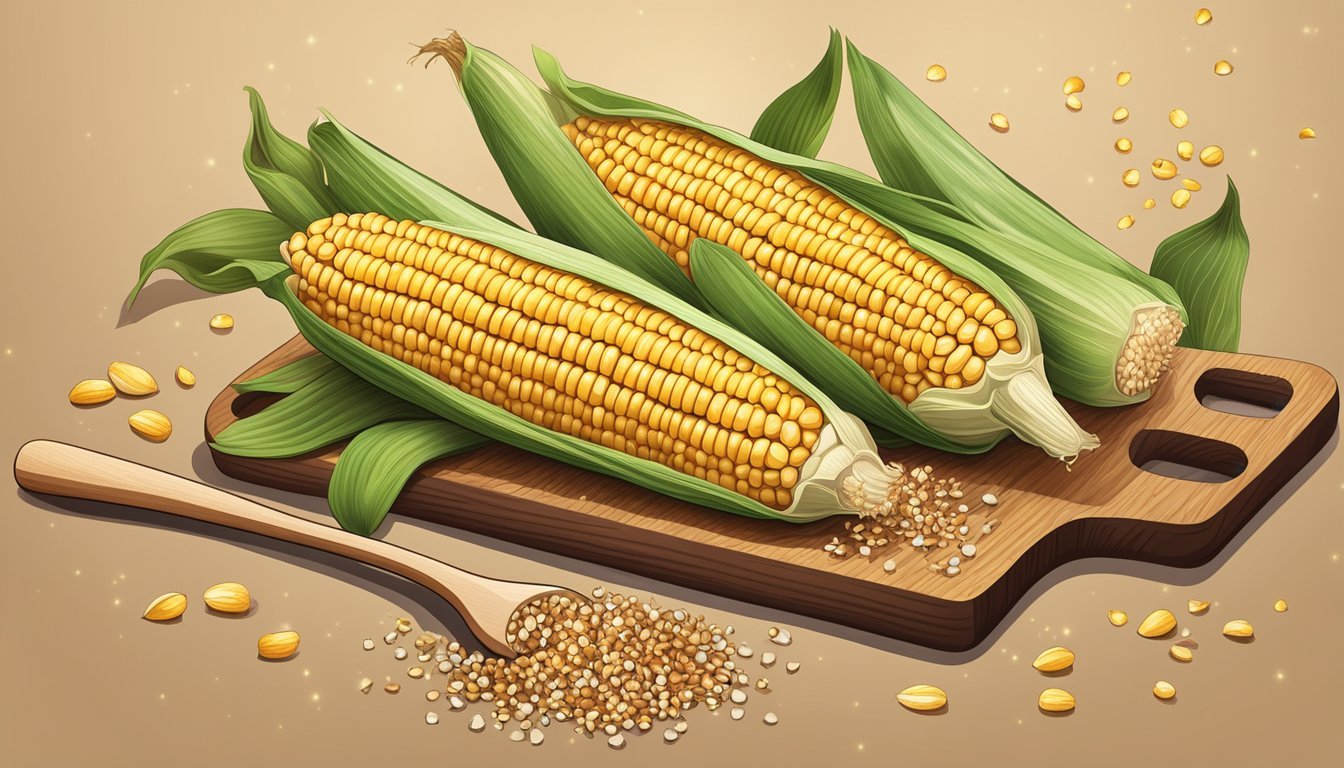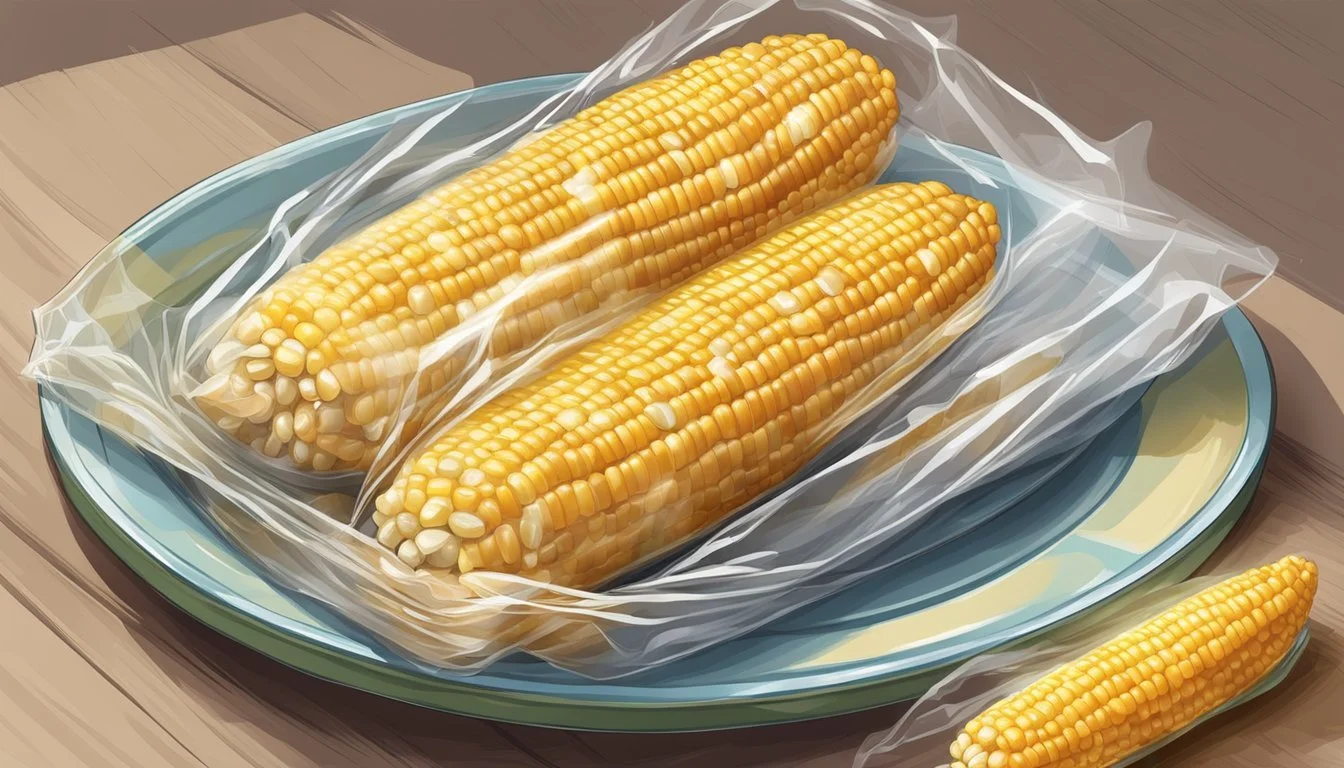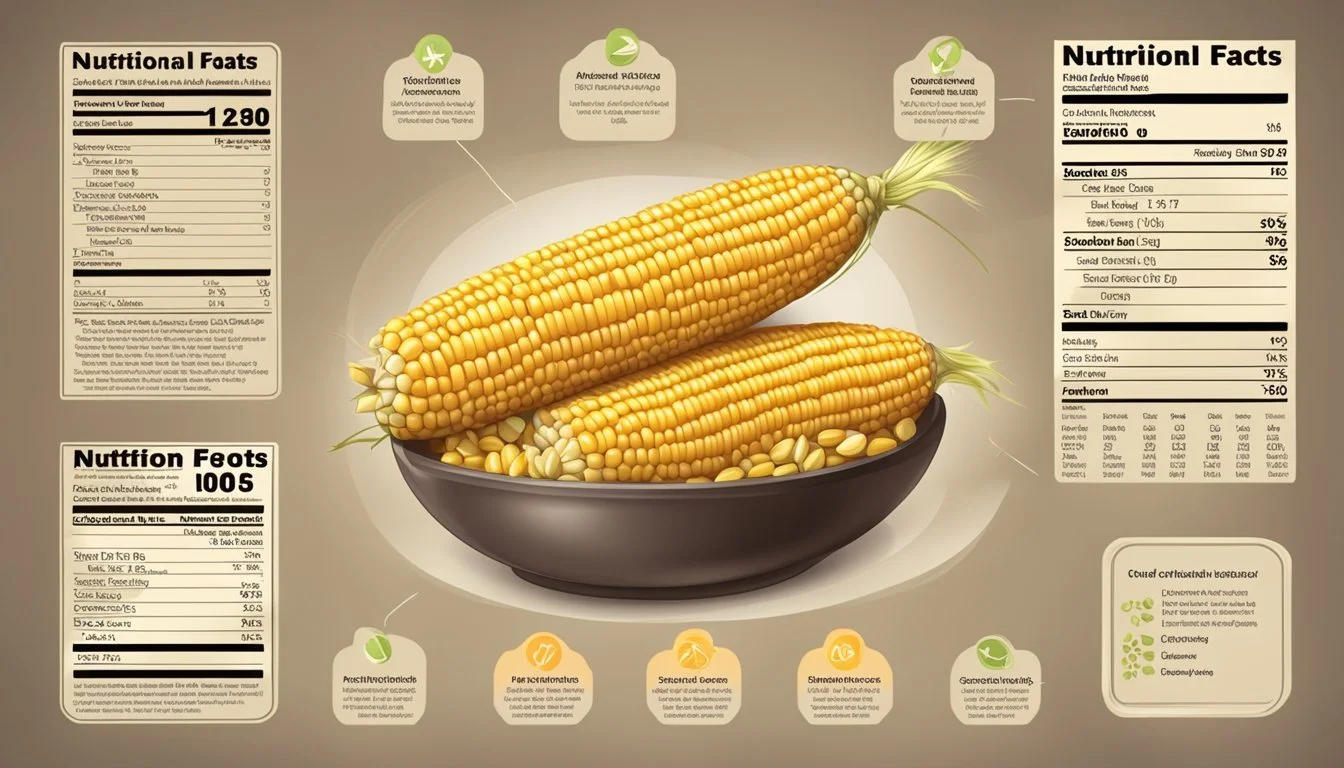How Long Does Roasted Corn Last?
Shelf Life and Storage Tips
Roasted corn (how long does corn last?), with its sweet and smoky flavor, is a beloved treat and a staple at barbecues and fairs. Ensuring that this delectable dish maintains its quality when stored is a common concern for both home cooks and culinary experts. Typically, roasted corn remains fresh and safe for consumption for 3 to 5 days when kept in the refrigerator. The key to longevity lies in proper storage methods, such as sealing it in airtight containers or wrapping it tightly in plastic wrap to prevent moisture loss and protect it from cross-contamination.
When it comes to freezing roasted corn, its shelf life extends significantly. Roasted corn can be stored in the freezer for up to 6 months. This is an excellent option for those who wish to enjoy the summery flavor of corn beyond its seasonal availability. To freeze roasted corn successfully, one should ensure that the corn is cooled completely before being placed in freezer-safe bags with excess air removed, which reduces freezer burn and preserves the corn's texture and flavor.
Storing roasted corn correctly not only extends its shelf life but also retains its quality. Whether refrigerated or frozen, roasted corn should be consumed within these timeframes to enjoy its best taste and nutritional value.
Fundamentals of Roasting Corn
Roasting corn enhances its natural sweetness and adds a delightful smoky flavor. There are several key steps involved in achieving perfect roast corn every time.
Roasting Techniques
Oven Roasting: One can roast corn in the oven with or without the husk. When roasting with the husk on, it acts as a natural barrier that steams the corn. For husk-off roasting, corn is placed directly on the oven rack or onto a lined baking sheet.
Grill Roasting: For a charred, smoky taste, corn can also be roasted on the grill. This method generally requires the corn to be rotated occasionally to ensure even roasting.
Prep Time and Temperature
To properly roast corn, preheating the oven or grill is crucial. The standard temperature is often set to:
400°F (205°C) for oven roasting
Medium-high heat for grilling
Prep time generally includes shucking the corn and removing silk, which can be done quickly. The actual roasting time ranges from 20 to 30 minutes depending on the method and personal preference for doneness.
Corn Selection
Selecting quality fresh corn is vital:
Look for bright green husks that are tightly wrapped around the cob.
Ensure the silk is moist and golden.
Kernels should be plump, arranged in tight rows, and juicy when pierced.
Whether one chooses to keep husk on or husk off depends on the desired outcome. Keeping the husk on tends to yield more tender corn, while removing it allows a deeper roast flavor to develop.
Flavor Enhancement
Enhancing the flavor of roasted corn involves a strategic choice of seasonings, oils, and herbs. Each addition serves to elevate the natural sweetness of the corn while introducing complex layers of taste.
Seasoning Choices
A variety of seasonings can be used to enrich the flavor profile of roasted corn. Essential to this process are salt and black pepper, which form the base layer of seasoning. Many recipes recommend adding paprika for a slight smokiness, kosher salt for a cleaner saltiness that doesn't overpower, and chili powder or garlic powder for a subtle kick. These seasonings should be used judiciously to complement rather than dominate the corn's natural flavor.
Basic Seasonings:
Salt (preferably kosher)
Black pepper
Paprika
For Heat:
Chili powder
Black pepper
For Umami:
Garlic powder
Butter and Oil Variations
The use of butter (how long does butter last?) and olive oil plays a pivotal role in flavor enhancement. Roasting corn with herbed butter, which can easily be prepared by mixing melted butter with chopped herbs like cilantro or garlic, adds a savory depth. Alternatively, drizzling corn with olive oil before roasting unlocks a different profile, with a subtle fruitiness that complements the corn's sweetness. It's important to coat each kernel evenly for consistent flavor.
Buttery Options:
Herbed butter
Garlic-infused butter
Oily Options:
Olive oil
Flavored olive oils
Herbal Additions
Incorporating fresh herbs such as cilantro can introduce a fresh, citrusy note, while garlic, either minced fresh or powdered, provides a comforting, earthy undertone. Herbs should be added towards the end of the roasting process to preserve their vibrant color and delicate flavor.
Herb Suggestions:
Fresh cilantro, finely chopped
Minced fresh garlic or garlic powder
Serving Suggestions
Roasted corn is a versatile dish that can be seamlessly integrated into a variety of meals. The following serving suggestions aim to enhance the flavors and presentation of roasted corn.
Side Dish Options
Roasted corn on the cob shines as a side dish with its natural sweetness and satisfying texture. It pairs beautifully with a range of recipes, making it an ideal addition to any meal roster.
Vegetable Medley: Combine roasted corn with other vegetables like bell peppers and zucchini for a colorful and nutritious side.
Grilled Corn: Alternating between roasted and grilled corn can add a smoky flavor to the plate, complementing proteins like chicken or steak.
Topping Inspirations
The right toppings can elevate roasted corn into a culinary delight, offering a play of flavors and textures that entice the palate.
Classic Street Corn: Spread a blend of cotija cheese, cilantro, and lime juice on warm corn on the cob for an authentic Mexican street corn experience.
Bacon & Cheese: Wrap corn in foil with bacon bits and a sprinkle of cheddar cheese, allowing the flavors to meld as they roast.
Salsa & Citrus: Top roasted corn with fresh salsa and a squeeze of fresh lime juice to add a zesty, refreshing kick.
Taco Companion: Chopped roasted corn makes an excellent topping for tacos, adding sweetness to balance spicier elements.
By considering these side dish options and topping inspirations, one can turn a simple ear of roasted corn into a standout component of any meal.
Storage and Freshness
The longevity and quality of roasted corn are heavily influenced by storage conditions and methods. Ensuring proper storage can maximize freshness and extend the shelf life of leftover corn.
Proper Storage Methods
Roasted Corn: Once roasted, corn should be allowed to cool. It can then be wrapped in aluminum foil or placed in an airtight container to reduce exposure to moisture and prevent contamination. When storing in the fridge, place the wrapped or contained corn in the crisper drawer if possible to maintain quality.
Containers: Use airtight containers for the best results.
Aluminum Foil: Wrap the corn tightly, ensuring no part of the cob is exposed.
Plastic Bag: If using a plastic bag, ensure it's not sealed too tightly to allow for some air circulation.
Shelf Life Determination
The shelf life of roasted corn depends on how well it is stored post-cooking. Here are specific timeframes for reference:
Fridge: Properly stored, roasted corn on the cob can last for 3-5 days. Always store it at consistent temperatures.
Leftover Quality: Assess the quality of leftover corn before consuming; if there are signs of spoilage such as an off smell or mold, discard it immediately.
Storage Location Estimated Shelf Life Fridge 3-5 days Freezer Up to 6 months
To maintain the best quality, moisture levels need to be controlled. Corn should neither be too dry nor too moist to prevent the risks of freezer burn or mold growth, respectively.
Reheating and Leftovers
Proper reheating can return nearly-fresh qualities to roasted corn, while leftovers provide a canvas for a variety of other dishes. It's important to employ the right techniques to ensure the corn retains its flavor and texture.
Reheating Techniques
When reheating oven roasted corn, it's best to heat it in an oven preheated to 350°F. The corn should be wrapped in aluminum foil to keep it moist. It can then be placed on a baking sheet and heated for approximately 15-20 minutes. One should always use an oven mitt when handling the hot baking sheet to avoid burns.
If time is short, using a microwave is a quicker option. The roasted corn should be placed on a microwave-safe dish, a tablespoon of water added for steam, and then covered with a vented lid or plastic wrap. The corn should be microwaved on high for around 2-4 minutes.
Creative Uses for Leftovers
Leftover roasted corn can be an ingredient for a range of recipes. They may strip the kernels from the cob and add them to salads, soups, or casseroles for a sweet and smoky flavor. Baked corn dishes, such as cornbread or corn pudding, can also benefit from the addition of leftover corn, enhancing their taste and texture.
Alternatively, leftover cobs can be reheated under the broil setting in the oven for a charred, grilled effect. Keep a close watch to prevent burning and turn them occasionally to achieve even browning.
Nutritional and Dietary Information
When assessing the nutritional and dietary information of roasted corn, one should consider its health benefits and the impact of dietary variations on its nutritional value. Roasted corn provides a balance of carbohydrates, some protein, and dietary fiber, making it a wholesome addition to a meal.
Health Benefits
Roasted corn is a nutrient-packed food that offers several health benefits. It is a good source of dietary fiber which aids in digestion and helps maintain a healthy weight. The fiber content in roasted corn is essential for good digestive health. Additionally, corn contains vitamins and antioxidants that support the immune system.
Fiber: Approximately 2.9g per cup (10% of Daily Value)
Protein: About 4.8g per serving
Vitamin C: An essential nutrient, also acting as an antioxidant
Roasted corn contributes to overall wellness with its nutrient composition, which is beneficial for maintaining good health and preventing chronic diseases.
Dietary Variations
The nutritional profile of roasted corn can vary based on dietary preferences and preparation methods. For those following a vegan diet, corn is a staple food that can be enjoyed without any animal products. However, the addition of butter can change the nutritional content significantly.
Vegan: Roasted corn without any additives is suitable for a vegan diet.
With Butter:
Type of Butter Effect on Nutrition Unsalted Butter Increases fat content, no added sodium Salted Butter Increases both fat and sodium content Softened Butter Affects texture and fat content
The use of unsalted butter can be a healthier option as it does not add extra sodium to the dish, while salted butter increases both fat and sodium, which might not be desirable for every diet. Sweet corn, a variety of American corn, is often used for roasting due to its high sugar content and tenderness, making it a flavorful choice while still providing essential nutrients.
Troubleshooting Common Issues
In the process of roasting corn, one may encounter issues with doneness and caramelization or texture and moisture. Understanding how to identify and resolve these issues ensures that the corn maintains its optimal flavor and texture.
Doneness and Caramelization
To assess doneness, one should look for a golden-brown color on the corn kernels, an indication that they have been adequately roasted. Caramelization of the sugars within the corn gives it a distinct, sweet flavor that can be achieved by roasting at a high temperature until the desired color is reached. In the event that the corn is undercooked, it will often appear too pale and lack the characteristic roasted flavor. If the corn is overcooked, the kernels may become excessively browned or burnt. For the ideal balance, one may need to adjust the roasting time or temperature based on their oven's specifics.
Texture and Moisture Problems
When roasted corn turns out either too dry or mushy, the texture can be disappointing. A common problem leading to a dry outcome is over-roasting, which can cause the moisture to evaporate from the kernels. To prevent this:
Roast Corn at 400°F (204°C) for 25-30 minutes.
Turn Corn Halfway through cooking to ensure even roasting.
On the other hand, corn that is not properly shucked can retain excess moisture, leading to soggy kernels. Ensure all silk and husk are removed before roasting, as these can trap in steam and prevent the corn from drying out properly. If the corn has still turned out too moist after following these steps, next time, one might try patting the corn dry before seasoning and roasting it.
Advanced Roasting Techniques
This section explores sophisticated methods for roasting corn, examining the differences between grill and oven techniques, and discussing the use of foil and husks for optimal flavor and texture.
Grilled vs. Oven Roasted
Grilling corn typically imparts a smoky flavor and charred texture that is highly sought after. On the grill, one can roast corn either directly on the grate or wrapped in foil or husks. Grilled corn is often rotated frequently to achieve an even roast. In contrast, oven roasted corn on the cob offers a more controlled environment for cooking. The consistent temperature of an oven allows for uniform doneness without the direct charring effect that grilling provides.
Grill Method: Achieves a smoky flavor; corn is rotated for an even char.
Oven Method: Provides consistent heat; results in uniform doneness without charring.
Using Foil and Husks
Roasting corn in aluminum foil or corn husks can enhance flavor and moisture retention. The foil or husks trap steam during the cooking process, which helps to keep the corn on the cob juicy and tender.
Using Aluminum Foil:
Wrap the corn in foil to seal in moisture.
Roasting time varies, but it typically takes about 20 to 30 minutes at 400°F (204°C).
Using Corn Husks:
Soak the husks in water to prevent burning.
Corn is then placed either directly on the grill or in the oven at a similar temperature and duration as when using foil.
Each method provides a barrier that steams the corn during the roasting process, though the foil tends to yield a softer texture, while the husks can impart a subtle, earthy flavor to the oven roasted corn.
Gourmet Varieties
Exploring gourmet varieties of roasted corn leads to a delightful journey through international flavors and specialty recipes. These varieties often incorporate unique seasoning blends and fresh ingredients, providing an elevated culinary experience.
International Flavor Influences
Gourmet roasted corn can take on an assortment of international flavors. Mexican street corn, or elote, is a classic example that includes a generous coating of mayonnaise, a squeeze of lime juice, a sprinkle of chili powder, and is often topped with cotija cheese for a salty, tangy finish. Another variation might see the corn dressed with Italian Parmesan, a brush of olive oil, a touch of oregano, and fresh thyme.
Mexican Influence: Cotija cheese, lime juice, and chili powder.
Italian Influence: Parmesan cheese, olive oil, oregano, and fresh thyme.
Specialty Corn Recipes
Specialty recipes elevate the simple roasted corn into a gourmet dish, by incorporating a mix of seasoning, herbs, and sauces. Imagine corn roasted with salsa infused butter, or dusted with a homemade spice rub featuring ground thyme and smoked paprika. For those who favor an aromatic twist, a sprinkle of fresh thyme leaves just before serving adds a fragrant note.
Salsa Butter Corn: Brush roasted corn with salsa flavored butter for a tangy twist.
Herb-Seasoned Corn: Rub corn with a mixture of dried thyme, oregano, salt, and pepper before roasting.
Each recipe brings out different aspects of the corn's natural sweetness and combines them with a complex array of spices and herbs to provide a sumptuous treat for the palate.











